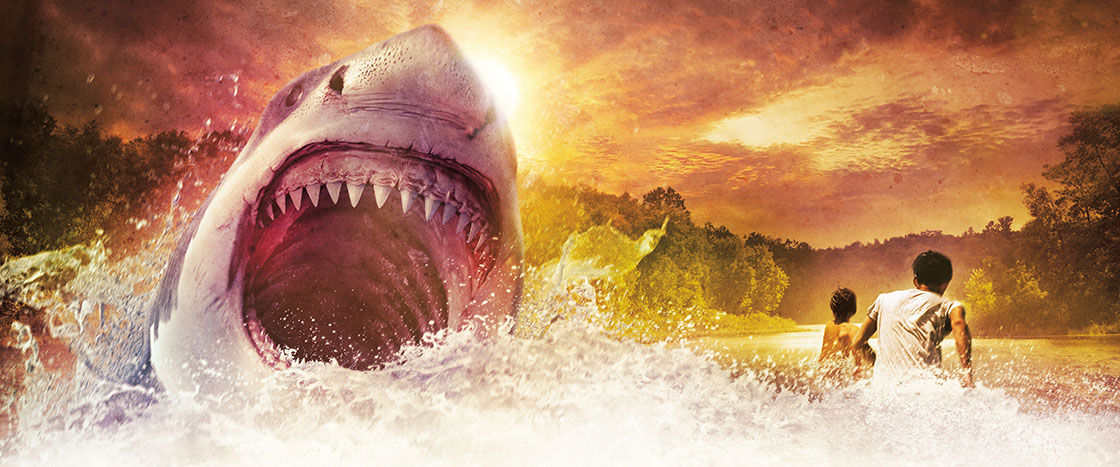It was July 12, 1916, and 12-year-old Joseph Dunn was sprinting toward Matawan Creek. Behind him were his 14-year-old brother, Michael, and their buddy Jerry Hollohan. They reached the dock and Joe leaped off into the cool water.
Splash!
What could be better than this?
Joe and Michael lived in New York City. But they came to Cliffwood, New Jersey, where their aunt lived, as often as they could. The tiny town wasn’t a fancy place. There were no hotels, no white-sand beaches with rolling waves. Matawan Creek was a muddy waterway whose banks were lined with brick and tile factories. But to Joe and Michael, Cliffwood was paradise, a happy escape from the misery of summer in New York City.
And that summer had been blazing hot. The heat brought particular suffering to city dwellers, and not just the humans. Horses fainted in the stifling air. Dogs yelped as they walked along stove-hot sidewalks.
Out in Cliffwood, Joe and Michael could forget all that. They could play baseball with Jerry and other local kids. They could buy ice-cream cones for a nickel. Best of all, they could cool off in the creek.
But their carefree mood was soon interrupted by shouts. A man appeared on the dock, sweat-soaked and out of breath. What he said next nearly stopped Joe’s heart: “There’s a shark in the creek!”
A shark? In the creek?
Frantically, Joe swam toward the dock, where Michael and Jerry were already out of the water. Michael was reaching down to help Joe climb out when Joe felt something grab his leg, like a giant pair of scissors.
He felt a crunch. The water around him turned bright red. Time seemed to slow, and everything went dim.
Joseph Dunn had just become a victim in one of the most famous series of shark attacks in history. By the time the terror was over, three men and one boy would be dead.
But Joe didn’t know what was happening to him. He had only one thought: that he was about to die.
It was July 12, 1916, and 12-year-old Joseph Dunn was running toward Matawan Creek. Behind him were his 14-year-old brother, Michael, and their buddy Jerry Hollohan. They reached the dock. Joe jumped into the cool water.
Splash!
What could be better than this? Joe and Michael lived in New York City. But they came to Cliffwood, New Jersey, as often as they could. Their aunt lived there. The tiny town wasn’t a fancy place. There were no hotels. There were no white-sand beaches. Matawan Creek was a muddy waterway. Its banks were lined with factories. But to Joe and Michael, Cliffwood was heaven. It was a happy escape from the hot summer in New York City.
And that summer had been blazing hot. Horses fainted in the stifling air. Dogs cried as they walked on sidewalks as hot as stoves.
Out in Cliffwood, Joe and Michael could forget all that. They could play baseball with Jerry and other kids. They could buy ice-cream cones for a nickel. Best of all, they could cool off in the creek.
But their happy mood was soon interrupted by shouts. A man appeared on the dock. He was all sweaty and out of breath. What he said next nearly stopped Joe’s heart: “There’s a shark in the creek!”
A shark? In the creek?
Frantically, Joe swam toward the dock. Michael and Jerry were already out of the water. Michael was helping Joe climb out when Joe felt something grab his leg. It was like a giant pair of scissors.
He felt a crunch. The water around him turned bright red. Time seemed to slow. Everything went dark.
Joseph Dunn had just become a victim in one of the most famous series of shark attacks in history. By the time the terror was over, three men and one boy had died.
But Joe didn’t know what was happening to him. He had only one thought. He was about to die.

